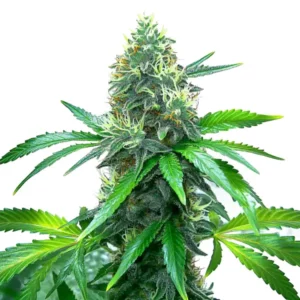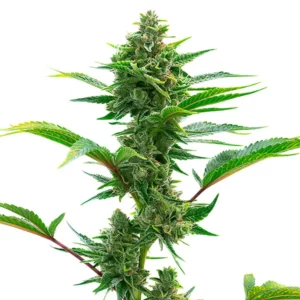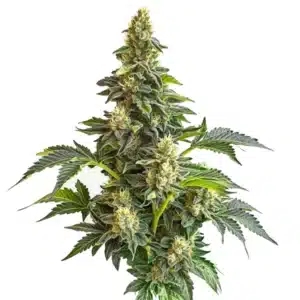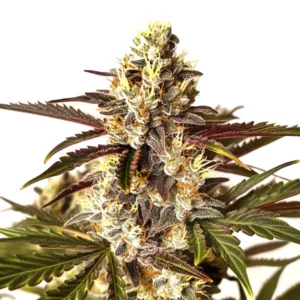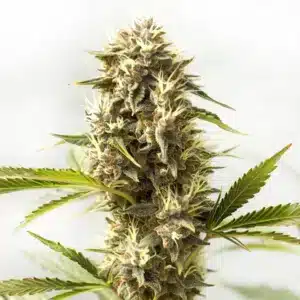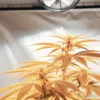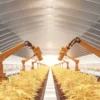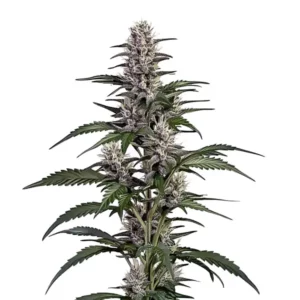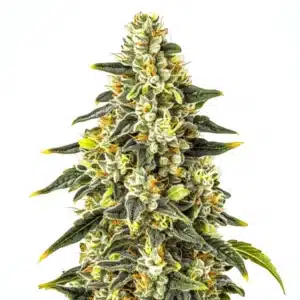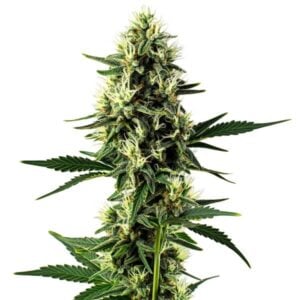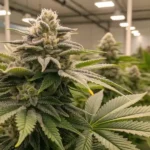
Cannabis Light Stress vs Light Optimization
Let’s dive into the nuances of Cannabis Light Stress vs Light Optimization. Light is the energy source for your cannabis plants, and just like us, they thrive with the right amount. Too little or too much can lead to issues. It’s crucial to strike a balance between giving your plants enough light to grow robustly and avoiding the pitfalls of light stress.
Light stress occurs when your plants receive too much light, leading to cannabis light stress symptoms like leaf burn, wilting, and yellowing leaves. On the flip side, light optimization ensures your cannabis receives the perfect amount of light for maximum yield. This process involves understanding your plants’ needs and adjusting your grow setup accordingly.
Recommended Strains
CBD Critical Mass (1:1)
|
|
CBD | 5% (Low) |
|
|
Type | CBD Feminized |
|
|
Yield | Medium |
|
|
Phenotype | 60% Indica / 40% Sativa |
OG Kush
|
|
THC | 20% - 24% (Medium) |
|
|
Type | Feminized |
|
|
Yield | Medium |
|
|
Phenotype | 55% Indica / 45% Sativa |
Let’s explore practical ways to prevent light stress in cannabis plants while effectively optimizing light for cannabis growth. Whether you’re growing indoors or outdoors, understanding these principles can help you cultivate healthier, more productive plants.
Cannabis Light Stress Symptoms
Recognizing cannabis light stress symptoms early can make a big difference in your plant’s health. One of the first signs is leaf burn. This occurs when the leaves closest to the light source show brown or yellow patches. It’s similar to how our skin reacts to sunburn.
Another symptom is wilting. You might notice leaves looking limp or droopy, even when the plant is well-watered. This occurs because the plant is trying to protect itself by reducing surface area exposed to excessive light. If these symptoms are ignored, they can significantly affect the overall health and yield of your cannabis plant.
Light stress can also result in stunted growth, as the plant’s energy is redirected from growing and thriving to merely surviving. The affected plants might also exhibit delayed flowering, which can ultimately reduce the overall yield and potency of the harvest.
Knowing these symptoms and taking timely action can prevent severe damage. Regular monitoring and adjustments to your light setup can not only help in avoiding stress but also enhance the overall health and vigor of your cannabis plants.
Effects of Light Stress on Cannabis Yield
Light stress doesn’t just affect the appearance of your plants. It can severely impact the yield. When plants are stressed by too much light, their energy is diverted from growth and bud production to recovery efforts. This means smaller, less potent buds.
Moreover, stressed plants are more vulnerable to diseases and pests. They lack the energy needed to fight off infections, leading to further complications. This can result in a lower overall yield and quality, which is not what any grower wants.
The effects of light stress on cannabis yield can be drastic if not managed properly. In severe cases, it can lead to complete crop failure, where the plants are unable to recover and produce any viable buds. This not only affects the quantity but also the quality of the harvest.
By focusing on Cannabis Light Stress vs Light Optimization, growers can maximize their yield potential. Proper light management ensures that the plants’ energy is dedicated to producing high-quality buds, rather than repairing damage caused by stress.
Promos & Deals
Optimizing Light for Cannabis Growth
Optimizing light for cannabis growth involves providing the right amount and type of light. For indoor growers, this often means investing in quality LED grow lights. These lights offer a full spectrum, closely mimicking natural sunlight, and can be adjusted to meet your plant’s needs at different growth stages.
Outdoor growers might focus on ensuring their plants receive at least 6-8 hours of direct sunlight daily. Adjust your planting times and locations to maximize sun exposure, ensuring your plants have the energy they need to thrive.
Another aspect of optimizing light for cannabis growth is understanding the different light spectrums and their effects on plant development. Blue light is crucial during the vegetative stage, promoting robust growth and healthy foliage, while red light encourages flowering and bud development.
Using a combination of these spectrums can help you achieve better growth outcomes. Additionally, integrating supplemental lighting during cloudy days or seasons with reduced sunlight can ensure that your plants consistently receive the optimal amount of light they need.
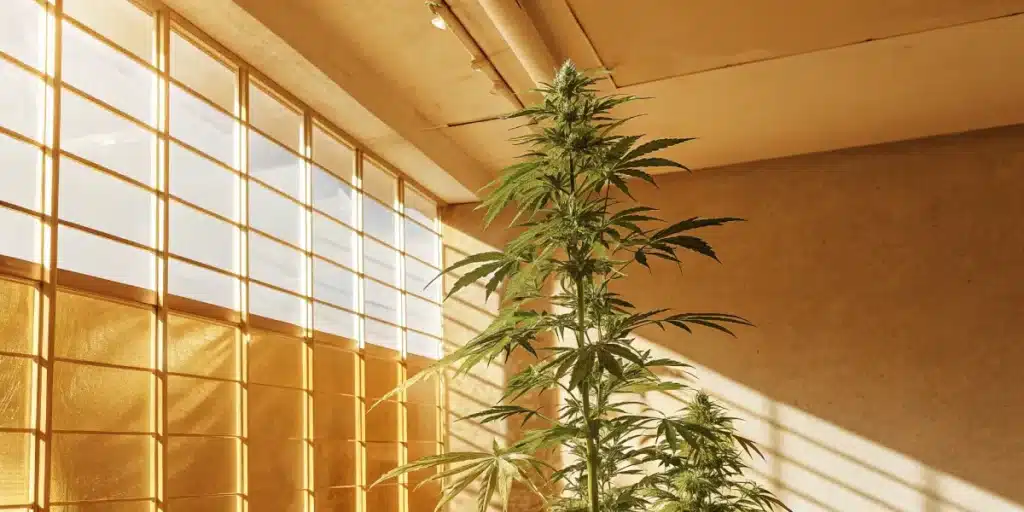
Cannabis Light Optimization Techniques
Implementing cannabis light optimization techniques can boost your plant’s growth and yield. One effective method is using reflective materials, like Mylar or white paint, in your grow area. These materials reflect light back onto the plants, maximizing the available light.
Another technique is adjusting the light cycle. Cannabis plants in the vegetative stage benefit from 18-24 hours of light, while flowering plants do best with 12 hours of light. Adjusting timers and light intensity can make a significant difference.
Advanced growers might also consider light training techniques such as LST (Low-Stress Training) or SCROG (Screen of Green) to ensure even light distribution across all parts of the plant. These methods can help in maximizing light exposure and enhancing overall plant productivity.
By carefully implementing these cannabis light optimization techniques, growers can create an ideal environment that encourages vigorous growth and maximizes yield potential. Regular assessment and adjustments based on plant responses are key to successful light management.
Preventing Light Stress in Cannabis Plants
Preventing light stress in cannabis plants starts with proper planning. Position your lights at the right distance from the plants. Most LED lights should be 12-18 inches above the canopy. Too close, and you risk burning the leaves; too far, and your plants might stretch, seeking more light.
Regularly monitor your plants for any signs of stress. Adjust the light distance or intensity immediately if you notice any symptoms. This proactive approach can save you from future headaches and ensure a healthy, thriving crop.
Preventing light stress in cannabis plants also involves choosing the right light schedule and maintaining consistent conditions. Sudden changes in light intensity or duration can shock the plants, leading to stress and growth issues.
Incorporating a gradual transition between different stages of growth can help in preventing light stress. By carefully managing the light environment, growers can ensure that their plants remain healthy and productive throughout the cultivation cycle.
Real-Life Examples of Light Management
Consider a grower who chose CBD Critical Mass for its high yield. Initially, they placed their LED lights too close, resulting in leaf burn. By adjusting the light height and using reflective materials, they optimized their setup, leading to a successful harvest.
Another example involves outdoor growers using sun tracking to maximize light exposure. By moving pots or adjusting plant positions throughout the day, they ensured their plants received optimal sunlight, boosting growth and yield.
These real-life examples underscore the importance of being attentive to your plants’ responses to light conditions. Successful growers know that Cannabis Light Stress vs Light Optimization is an ongoing process that requires constant monitoring and adjustment.
By learning from these examples and applying similar techniques, both novice and experienced growers can enhance their cultivation practices, ultimately leading to healthier plants and more bountiful harvests.

FAQs
What is the ideal light schedule for cannabis plants?
During the vegetative stage, cannabis plants thrive on 18-24 hours of light per day. This extended light exposure encourages robust growth and prepares the plants for a productive flowering stage. Once in the flowering phase, a 12/12 light/dark cycle is ideal, mimicking the natural daylight changes in fall.
Adjusting light schedules can be done with timers for indoor growing or by changing planting times for outdoor plants. It’s essential to maintain consistency to avoid stress and ensure plants transition smoothly between growth stages.
Consistency in the light schedule is crucial to avoid stressing the plants. Any abrupt changes can disrupt their growth cycle, leading to reduced yields and potential stress symptoms. Monitoring and maintaining a steady schedule ensures optimal growth conditions.
By knowing the ideal light schedule and implementing it effectively, growers can achieve significant improvements in plant health and yield, demonstrating the benefits of Cannabis Light Stress vs Light Optimization.
How can I tell if my cannabis plants are experiencing light stress?
Common cannabis light stress symptoms include leaf curling, yellowing, and burn spots on leaves. If you notice your plants exhibiting these signs, it’s crucial to assess your light setup immediately. Check the distance and intensity of your lights and make necessary adjustments.
Monitor your plants regularly for any changes. Early detection and response can prevent severe stress and ensure your plants continue to grow healthily.
Observing the overall plant posture and leaf orientation can also give clues about light stress. Leaves pointing downwards or appearing overly rigid can indicate stress, while healthy plants typically have leaves angled upwards towards the light.
By staying vigilant and addressing issues promptly, growers can prevent the escalation of stress symptoms, ensuring that their plants remain in optimal health for maximum yield potential.
Are there specific strains that handle light stress better?
Certain strains, like OG Kush and Blue Dream, are known for their resilience and ability to handle varying light conditions. These strains are ideal for growers who may be new to managing light stress.
However, while some strains are more forgiving, optimizing your light setup is crucial for all plants. Proper management can lead to a healthier crop and higher yields, regardless of the strain.
Strains with robust genetics and a history of thriving in diverse environmental conditions are often more adaptable to light fluctuations, making them a safer choice for beginners or those experimenting with new lighting setups.
Even with resilient strains, it’s essential to focus on proper light management. This approach not only prevents stress but also maximizes the plant’s genetic potential, resulting in superior growth and flower production.
What are the most effective light optimization techniques?
Using reflective materials, adjusting light schedules, and maintaining proper light distance are some of the most effective cannabis light optimization techniques. Reflective surfaces like Mylar can enhance light distribution, while proper scheduling can maximize plant growth.
Adjusting the light distance based on the growth stage helps prevent stress and promotes healthy development. These techniques, when combined, create an optimal environment for your plants.
Incorporating technology, such as light meters, can help growers precisely measure light levels, ensuring that their plants receive the ideal amount of illumination. This data-driven approach can lead to better informed decisions and improved outcomes.
By continuously refining these cannabis light optimization techniques, growers can adapt to their plants’ needs and environmental changes, leading to consistently high-quality results throughout the growing cycle.
How can I prevent light stress in my cannabis plants?
Preventing light stress involves careful planning and monitoring. Ensure your lights are at the correct distance, and regularly check for any stress symptoms. Proactively adjusting your setup can prevent issues before they impact your plants.
Consider using strains like CBD Critical Mass, which are known for their high yield and robustness. With the right approach, you can grow healthy, thriving cannabis plants.
Another effective method for preventing light stress is to gradually acclimate plants to increasing light levels, especially when transitioning from indoor to outdoor environments. This helps the plants adjust without overwhelming them.
By integrating these practices into your cultivation routine, you can effectively manage light stress, safeguarding your plants and optimizing their growth potential for a successful harvest.



